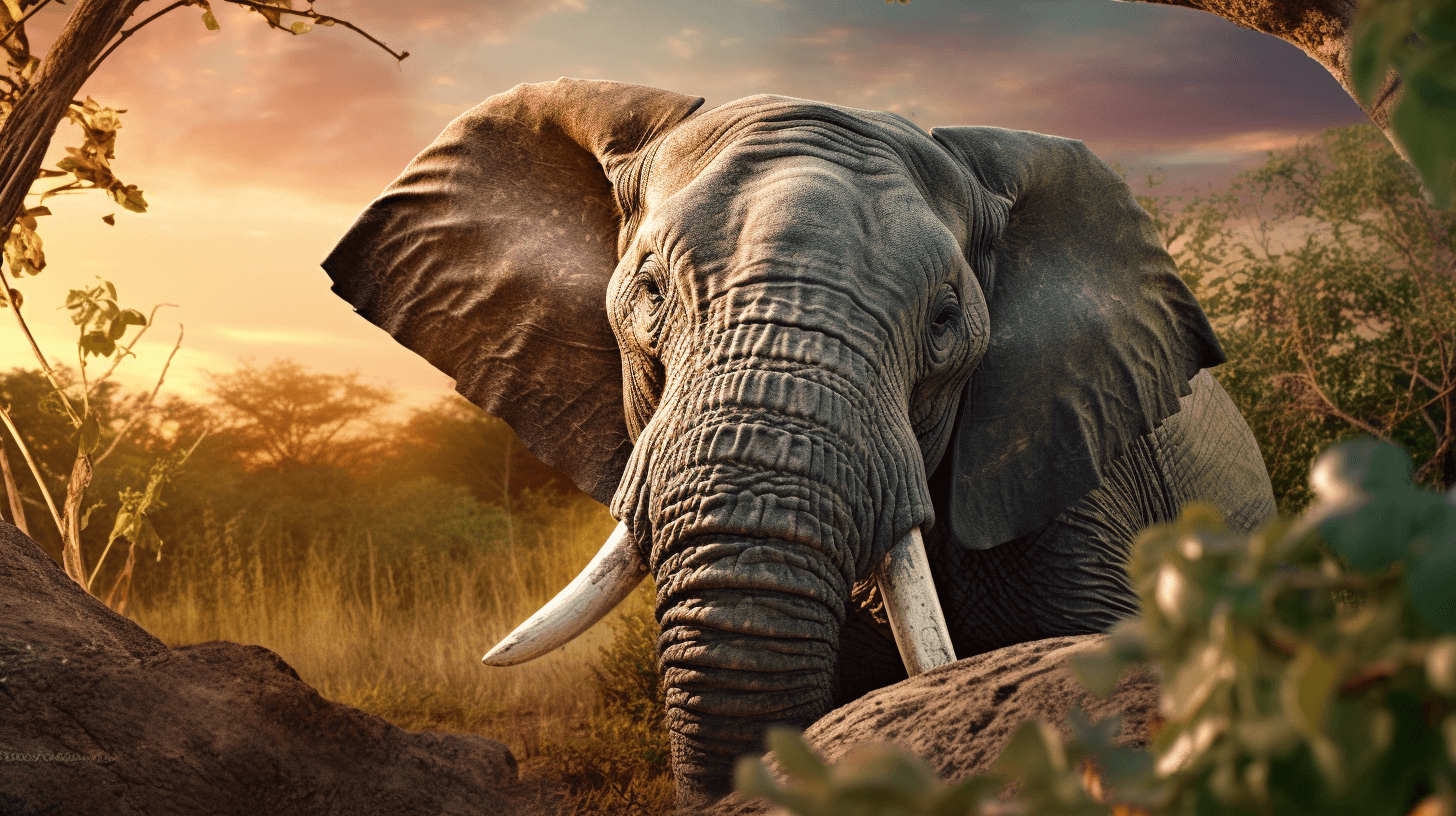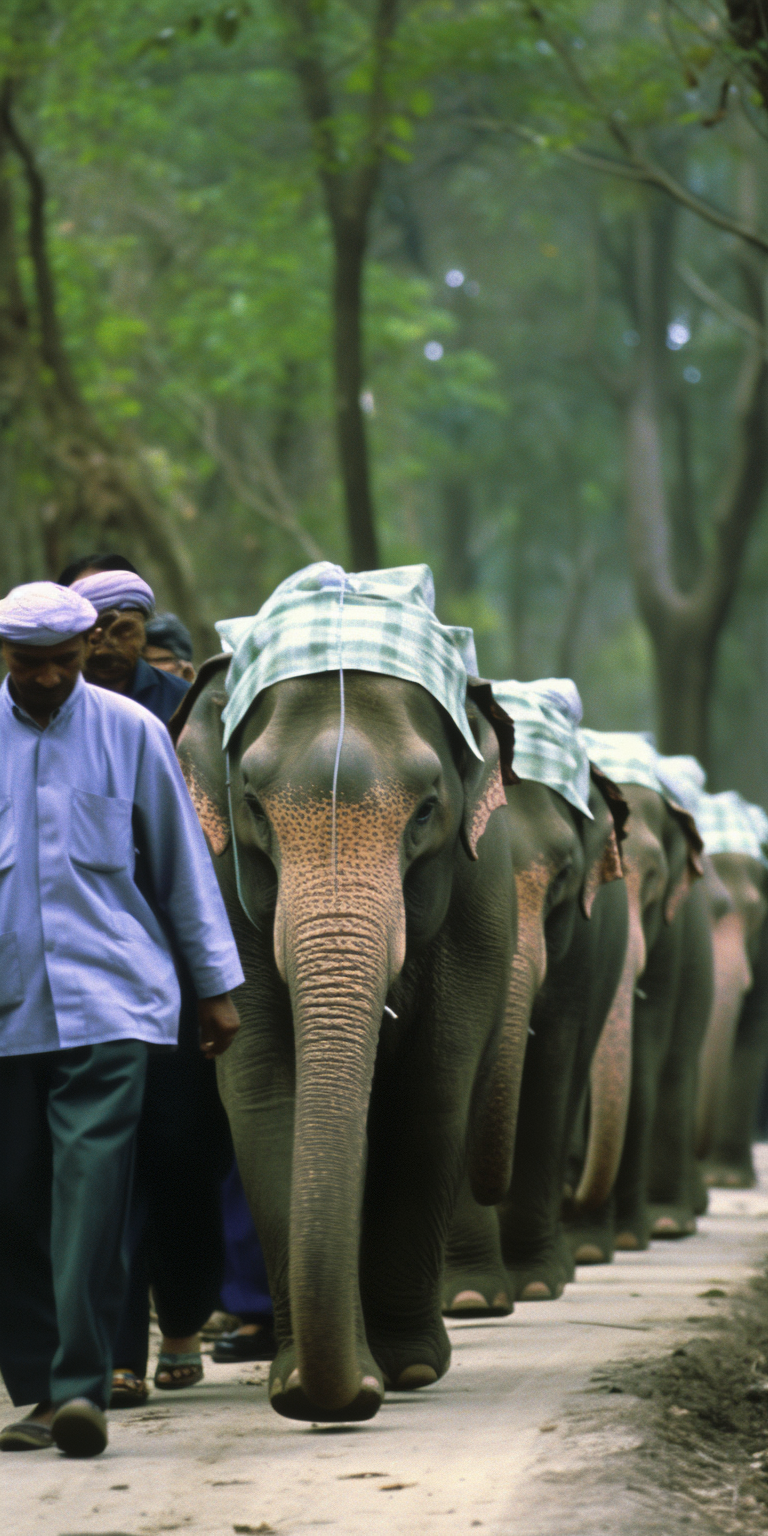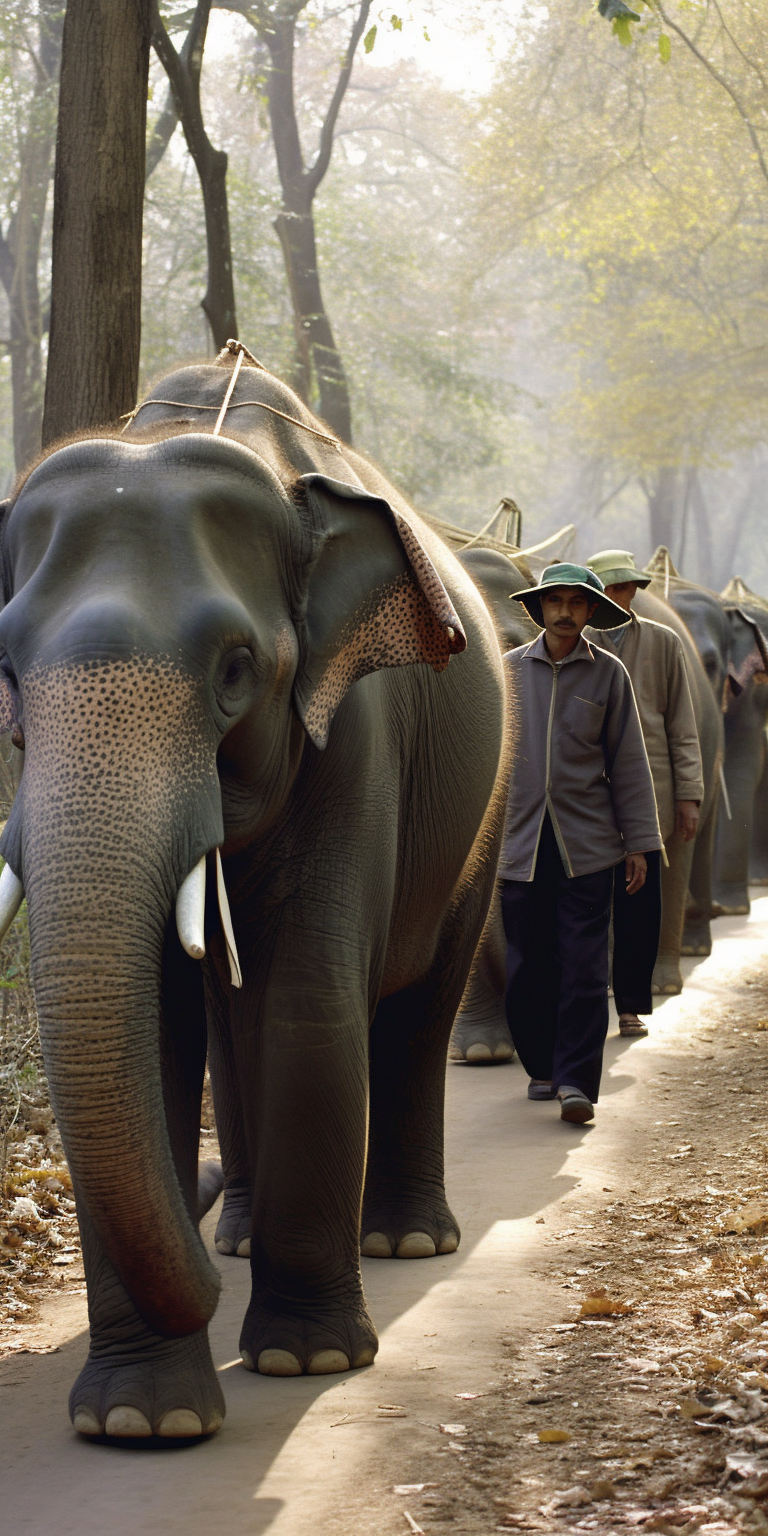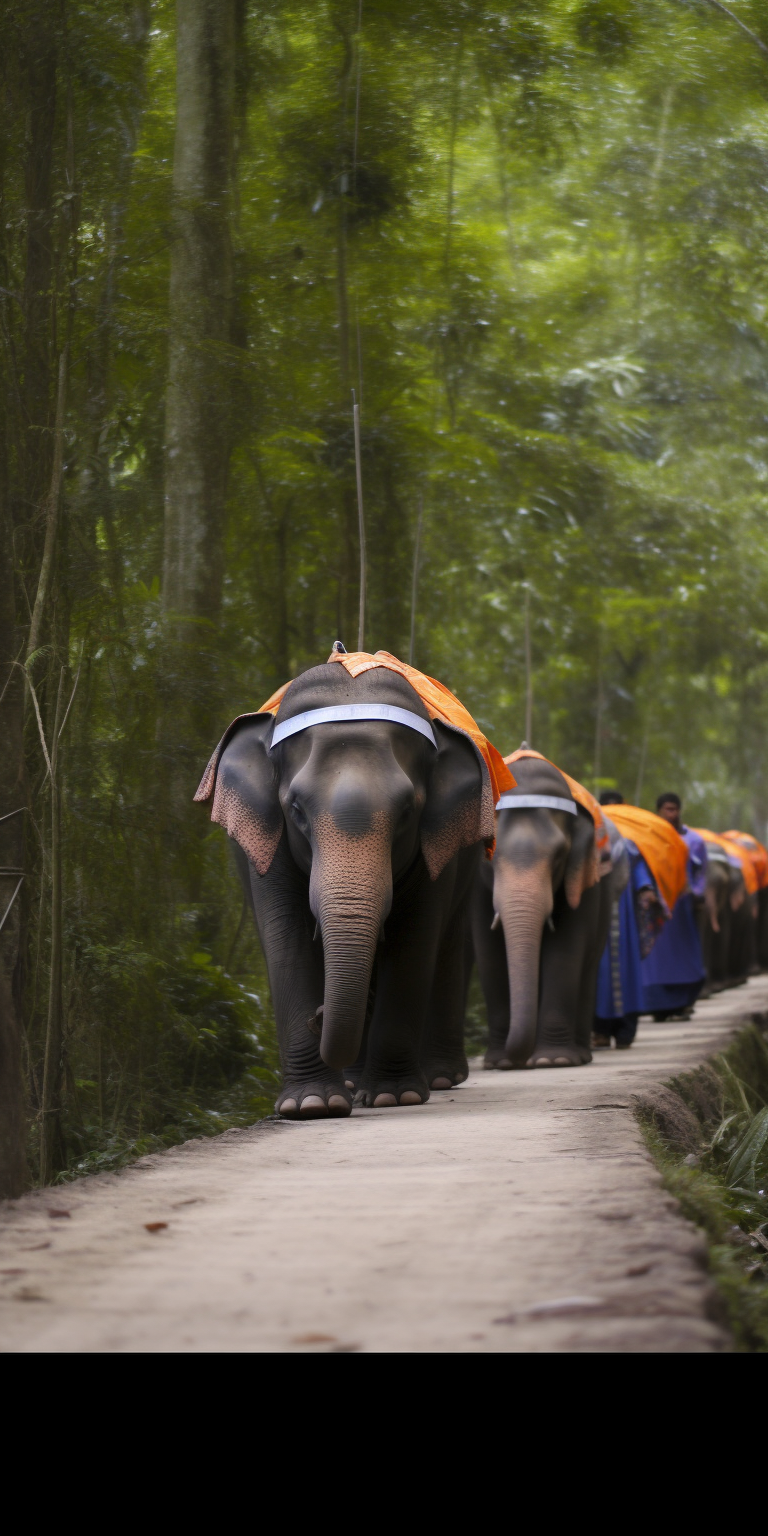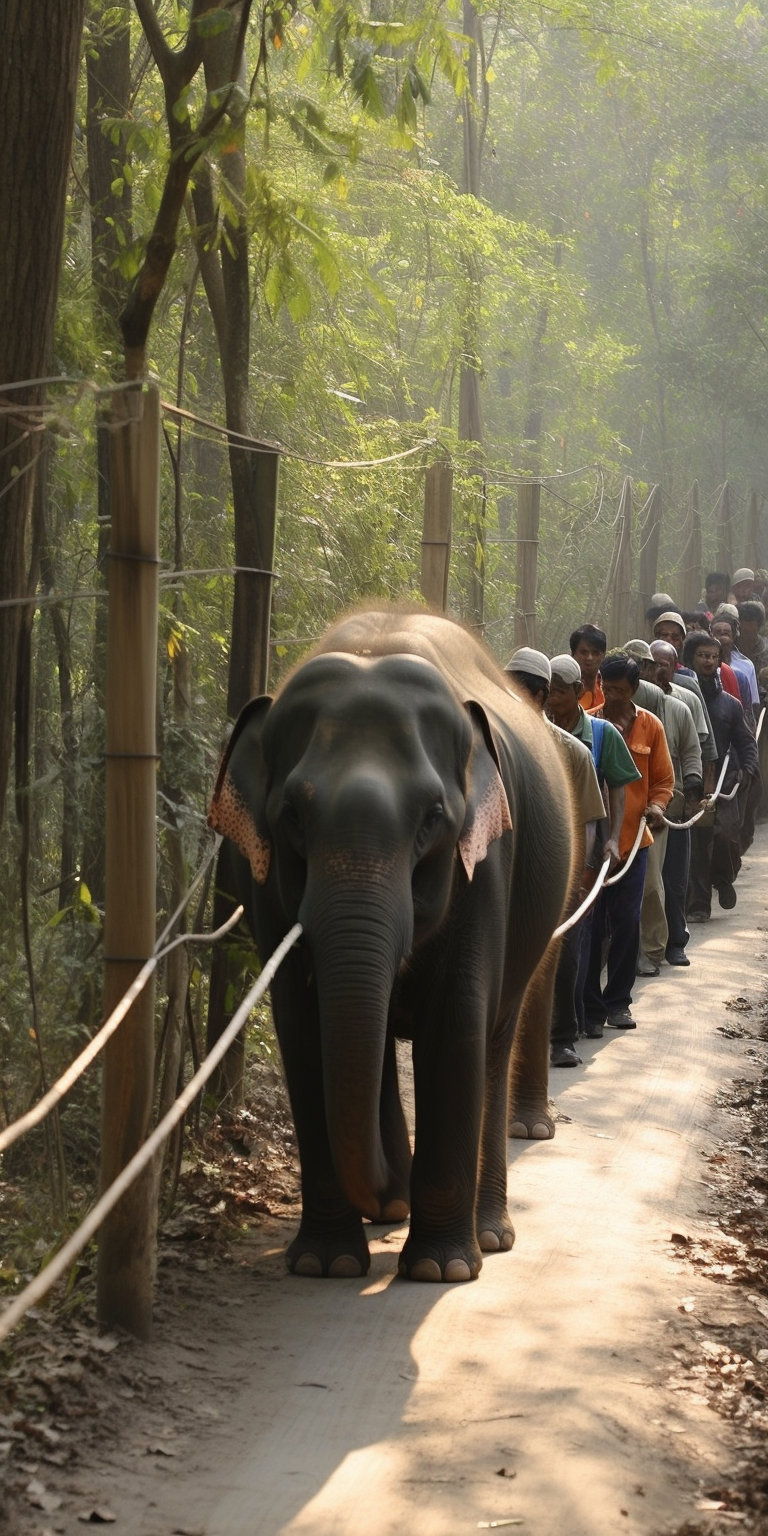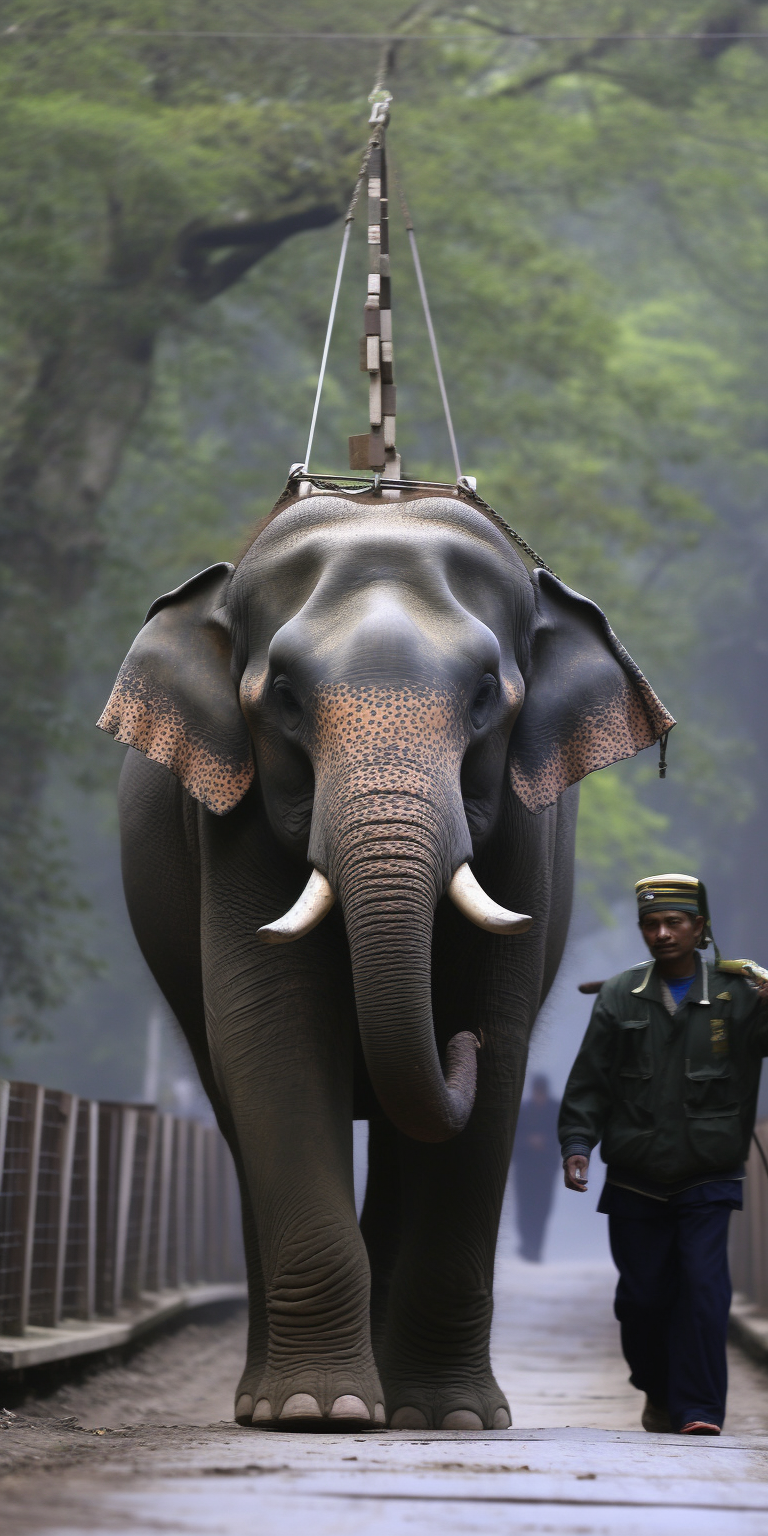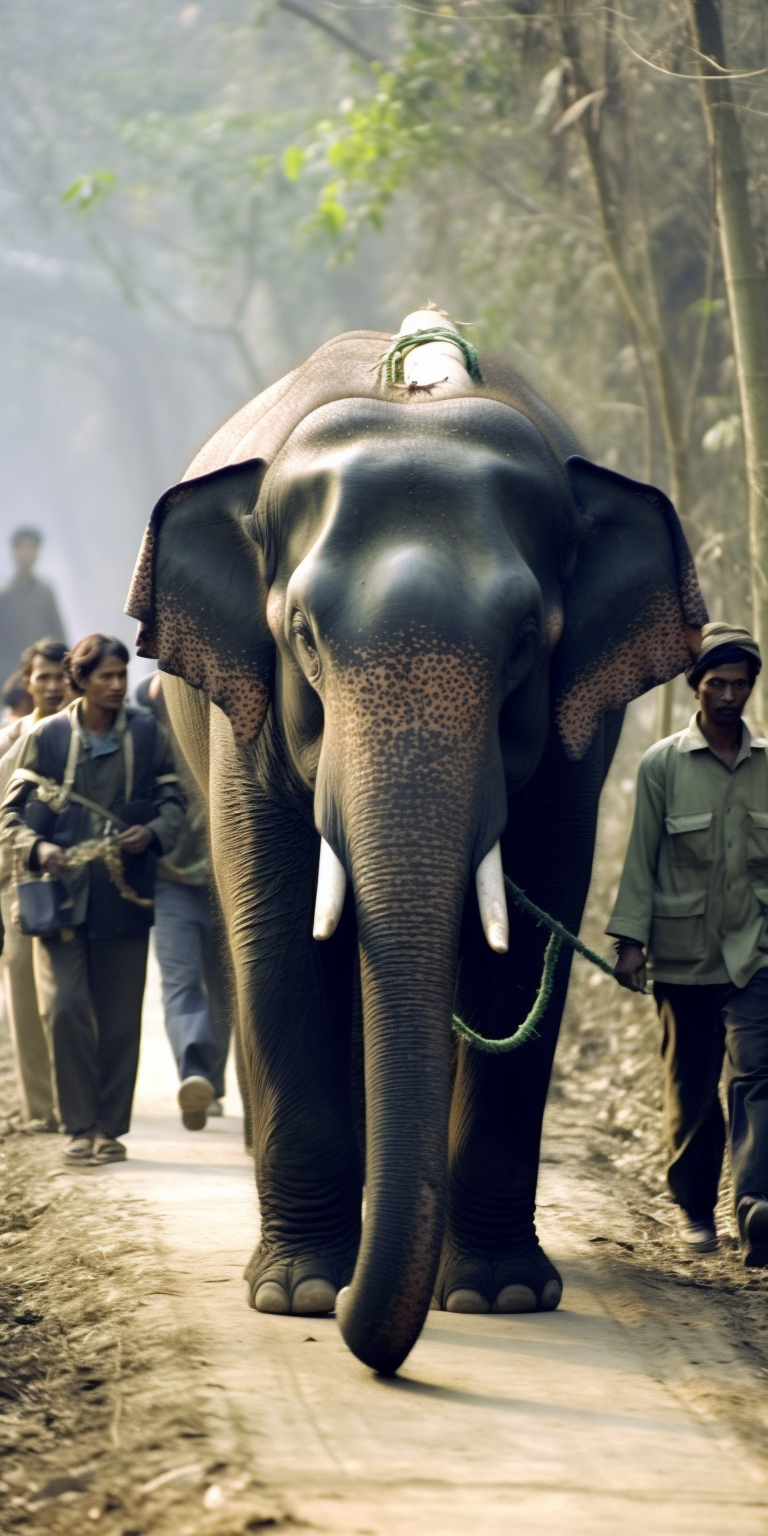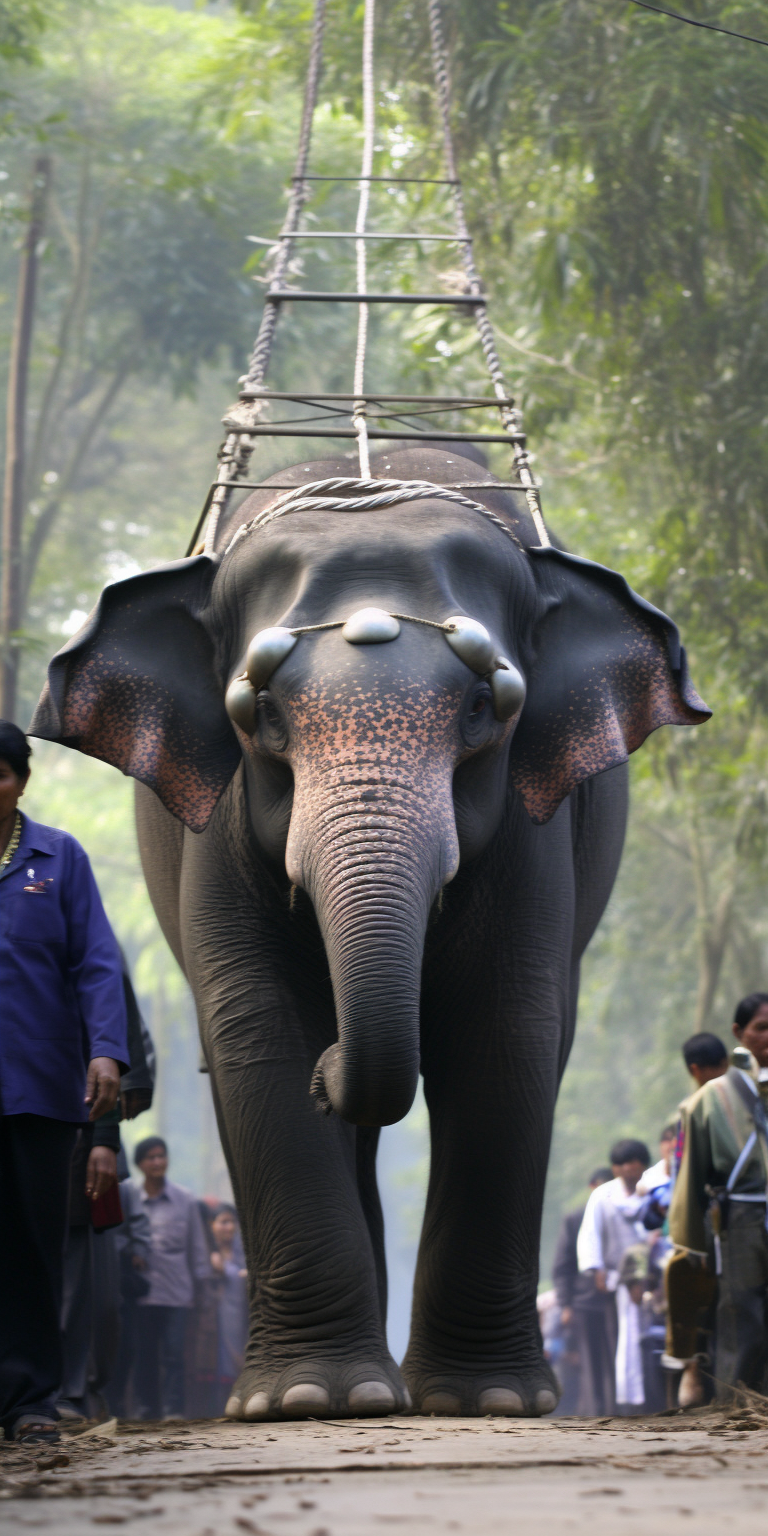How fo’ Make da Elephant Lose Balance: Da One No Can See… 🐘😵💫👀
⬇️ Pidgin | ⬇️ ⬇️ English
How Fo’ Make One Elephant Lose Balance? Jus’ Bring Out Da Big Kine Blindfold 🐘😎 Skip all da kine stuffs, we goin straight to da main tings. We talkin science today! Today’s paper stay bout one interesting topic: how fo’ make one elephant lose balance.
You know how? Wit’ one big kine blindfold! 😲🐘 Plenny studies wen show dat visual feedback help humans fo’ keep their balance, but no was clear if dis same ting would be true for elephants too. But now get new info from Emily Anthes on Sept 26, 2023.
Fo’ one Asian elephant weighing about 7,600 pounds or so, jus walking around can be risky business – like high stakes poker game brah! If dey trip or tumble down can cause some serious injury cuz you know wat they say da bigger you are the harder you fall. John Hutchinson who is an expert on large animal locomotion at the Royal Veterinary College in Britain said that “If an elephant falls it’s in big trouble.” But scientists neva really knew much about how elephants manage to stay stable while they cruising across da landscape till now. New study published in Biology Letters suggest dat visual feedback helps elephants time their strides right.
To do this study dem guys had to use Hollywood-trained animals (yeah das right!), giant blindfolds and also needed plenny courage fo nudge these massive creatures off balance small kind bit – carefully of course! Dr Hutchinson explained “Our elephants were going slowly…very slowly…a really slow walk,” He went add that And they were guided by friends and by their handlers so there was absolutely zero risk of them falling otherwise I would never have done the experiment.” Previous studies already showed us that visual feedback helps humans fine-tune our steps but wasn’t clear whether the same principle would be true for elephants. Especially since they often active in low-light conditions and might rely more on tactile cues and physical sensations to stay on their feet. Max Donelan, one expert in da mechanics and neurophysiology of locomotion at Simon Fraser University in Canada who wasn’t involved with this study said that “We know that the time delays in the nervous system and muscular system can be quite long especially for large animals like elephants.
NOW IN ENGLISH
Effective Strategies to Upset Elephant Balance: The Blindfolded
How to Make an Elephant Lose Balance? Just Bring Out The Big Blindfold 🐘😎 Skipping all the unnecessary details, we’re going straight to the main points. We’re talking science today!
Today’s article is about an interesting topic: how to make an elephant lose balance.You know how? With a big blindfold! 😲🐘 Numerous studies have shown that visual feedback helps humans maintain their balance, but it wasn’t clear if this same thing would be true for elephants too.
But now there’s new information from Emily Anthes on Sept 26, 2023.For one Asian elephant weighing about 7,600 pounds or so, just walking around can be risky business – like high stakes poker game buddy! If they trip or tumble down it can cause some serious injury because you know what they say the bigger you are the harder you fall. John Hutchinson who is an expert on large animal locomotion at the Royal Veterinary College in Britain said that “If an elephant falls it’s in big trouble.” But scientists never really knew much about how elephants manage to stay stable while they traverse across landscapes until now.
A new study published in Biology Letters suggests that visual feedback helps elephants time their strides correctly.To conduct this study these guys had to use Hollywood-trained animals (yes indeed!), giant blindfolds and also needed plenty of courage for nudging these massive creatures off balance slightly – carefully of course! Dr Hutchinson explained “Our elephants were going slowly…very slowly…a really slow walk,” He added And they were guided by friends and by their handlers so there was absolutely zero risk of them falling otherwise I would never have done the experiment.” Previous studies already showed us that visual feedback helps humans fine-tune our steps but wasn’t clear whether this principle would apply for elephants as well. Especially since they often are active in low-light conditions and might rely more on tactile cues and physical sensations to stay upright.

